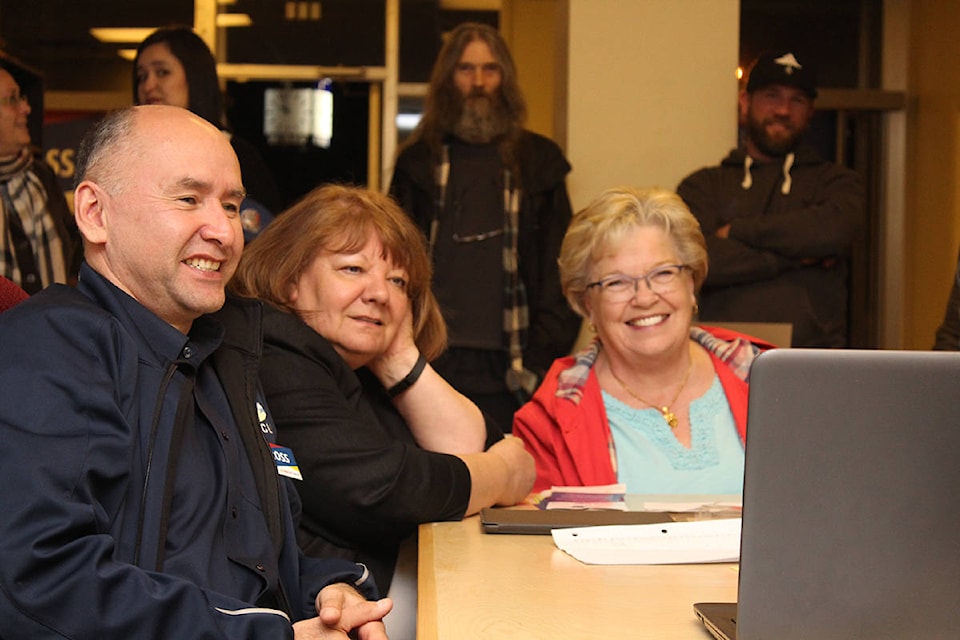A breakthrough in Kitimat helped BC Liberal candidate Ellis Ross amass a decisive provincial election victory May 9 over challenger New Democrat Bruce Bidgood, found an initial analysis of Skeena riding polls.
Ross, a former Haisla Nation chief councillor, took 6,370 votes to Bidgood’s 5089 and swept every polling station in Kitimat, gathering in 1,155 votes to Bidgood’s 733 for a winning margin of 422.
The margin built on BC Liberal gains in the 2013 provincial election in Kitimat when party candidate Carol Leclerc came within 23 votes of New Democrat Robin Austin.
Up until 2013, Kitimat had been considered a NDP voting stronghold thanks to its heavily unionized workforce.
But that demographic began to change when first the Eurocan pulp mill closed in 2009 and then when Rio Tinto modernized its aluminum smelter, resulting in the loss of more union jobs, noted Malcolm Baxter, a retired editor of The Northern Sentinel in Kitimat and now a columnist for The Terrace Standard.
“Clearly, the loss of the traditional union vote, the majority of which would have gone to the NDP was a factor in 2013 and more so now in this election,” he said.
Baxter added that the loss of the union voters in Kitimat was even more telling when comparing actual 2013 numbers to those of 2017.
Liberals got nearly the same number of votes, with Leclerc taking 1,113 votes in 2013, and Ross taking 1,115 this time.
But it seems NDP voters were the ones who left, because in 2013 Austin gathered in 1,136 votes for the NDP while this year Bidgood gathered 733.
“I think that shows the impact of the loss of the Kitimat union vote,” said Baxter.
Ross came close to winning his home Kitamaat Village, traditionally friendly NDP territory, taking 113 votes to Bidgood’s 130.
Moving north, Ross was a clear winner in the Lakelse Lake area with 72 votes over 21 for Bidgood.
In Thornhill and area, Ross had no trouble continuing previous BC Liberal success by gathering in 810 votes to 542 for Bidgood for a 268 vote spread.
Bench voters repeated their preference for the BC Liberals by casting 620 votes for Ross compared to 328 for Bidgood.
That was repeated in the Horseshoe with Ross taking 708 votes to Bidgood’s 482.
The Southside continued to back the NDP: 431 people voting for Bidgood but Ross made gains there compared to previous elections by gathering in 409 votes.
Bidgood also had success in the First Nations villages in the riding, continuing the solid tradition of aboriginal voters preferring the NDP.
In Kitsumkalum, 120 people voted for him with just 18 choosing Ross.
But it was closer in Kitselas where Ross took 51 votes to 92 for Bidgood.
That may be a reflection of Kitselas First Nation chief councillor Joe Bevan who supported Ross, said Baxter.
In the Nass Valley Bidgood received 817 votes to 114 for Ross.
Bidgood also took the Rosswood area with 30 votes to 18 for Ross.
Advance polling numbers indicated much the same overall voting preference as was exhibited on election day with Ross taking 2,233 votes to Bidgood’s 1,621.
Third party candidate Merv Ritchie of the Land Air Water party was not a factor in what was a two-person race between Ross and Bidgood, said Baxter.
“Ritchie did receive 524 votes but Ross’s winning margin of 1,281 votes over Bidgood says it all,” he said.
A final voting tally takes place next week in all ridings when absentee ballots are counted and for some close races, judicial recounts are in the offing.
“If that final count means provincially we will have a minority government, we get to do it all over again within two years,” said Baxter.
That’s the typical time minority governments tend to last until another election.
